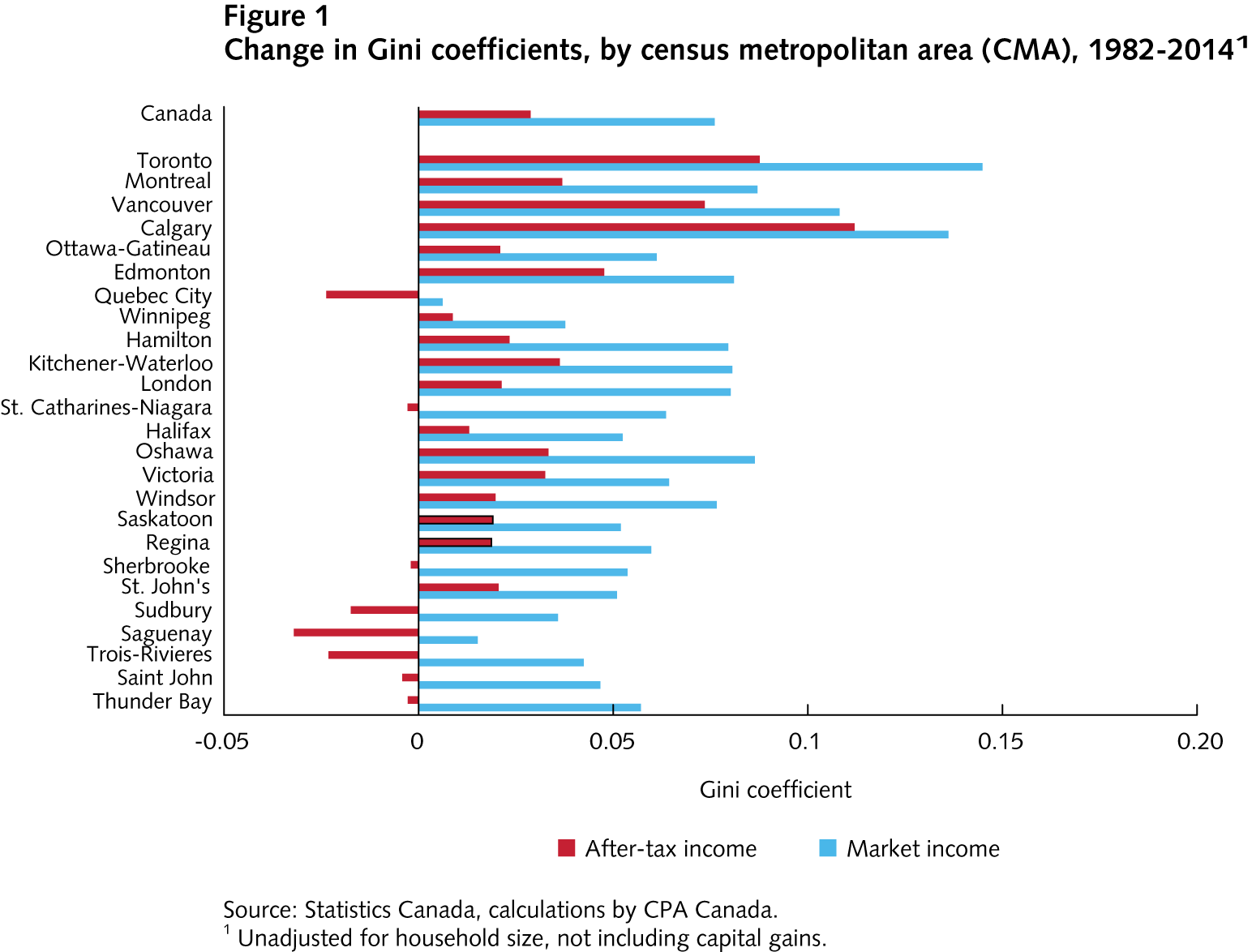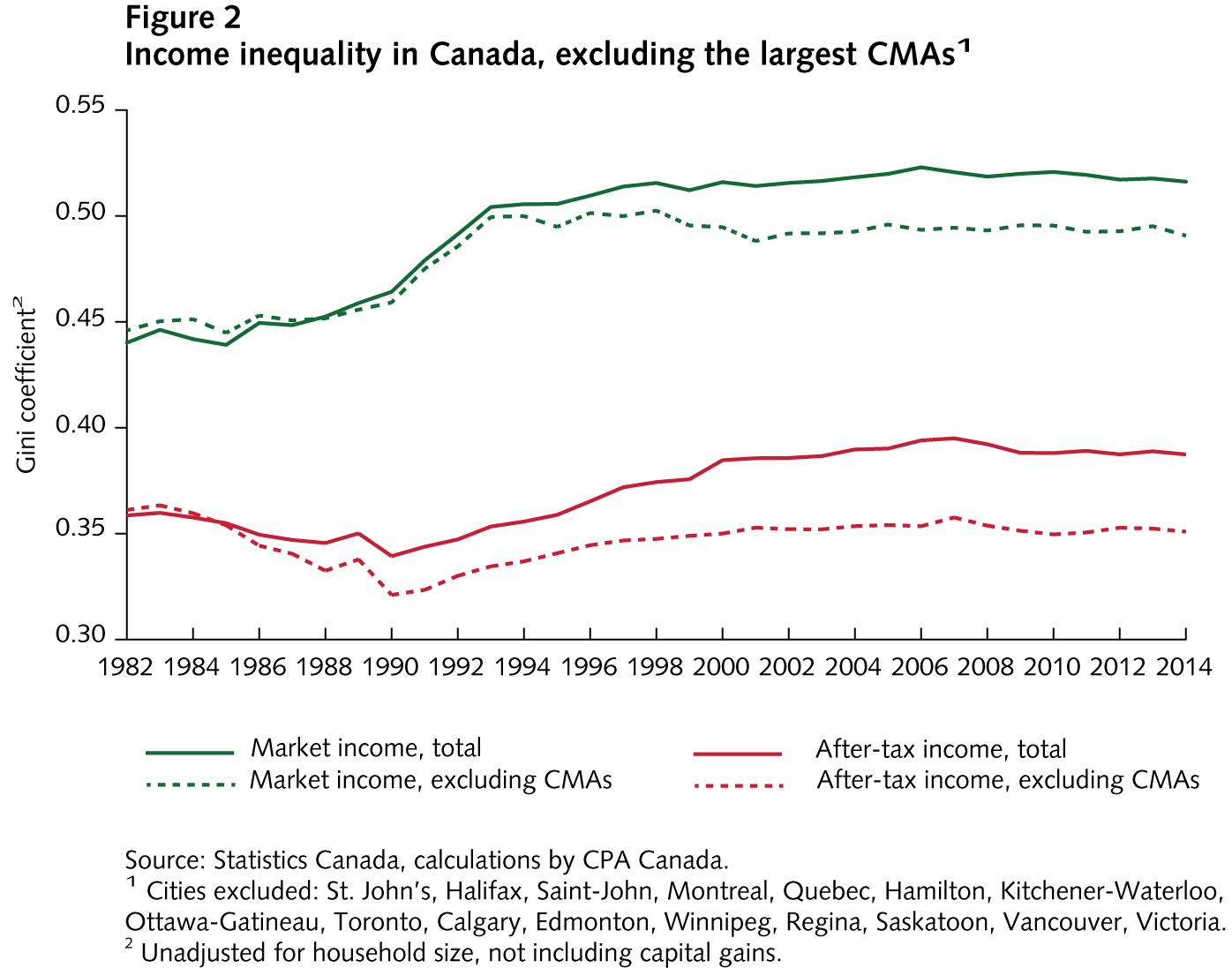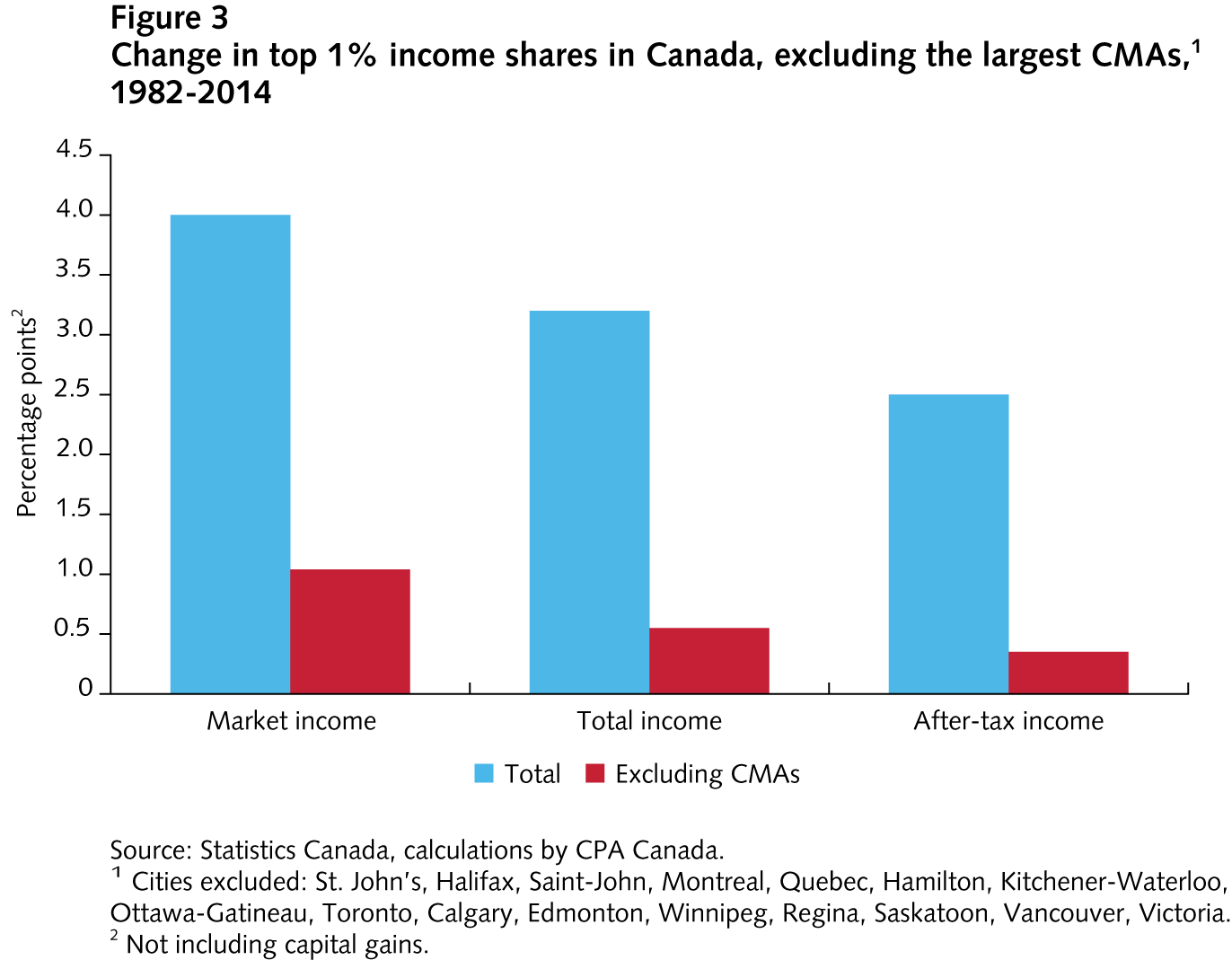
Behind the global chorus of G20 leaders calling for inclusive growth is the continuing concern about increasing income inequality. In Canada, two years ago, the current federal government ran (and won) partly on an economic agenda that featured the goal of promoting growth while combating inequality. Yet the promise to help middle-class Canadians is short on specifics. Who is the government actually trying to help? This is an important distinction to make. Our research shows that rising inequality is actually an urban phenomenon, primarily affecting our largest cities – a serious issue given that four out of five Canadians live in urban areas. It is not clear our policy conversations recognize that inequality is not something evenly experienced across the country.
To assess inequality at a more regional level, we constructed Gini coefficients for market income (wages, interest income), total income (market income plus government transfers), and after-tax income (total income less taxes) for each census metropolitan area in Canada, using data from the Canadian Income Survey (figure 1). The results show that, by far, the biggest increases in inequality have occurred in our four largest metro areas: Toronto, Montreal, Vancouver, and Calgary. After-tax inequality in Calgary rose four times more than the national average between 1982 and 2016. Vancouver and Toronto follow closely behind with increases two and a half and three times larger, respectively. Likewise, the increase in the share of income going to the richest 1 percent of Canadians is also more prominent in these metro areas.
But these four are just the most striking examples. Major cities across the country have seen similar dynamics, which calls the national inequality story into question. When looking at either the 1 percent income share or the Gini coefficient at the national level, inequality appears to have risen only moderately over time and has been relatively stable since around 2000. But if the increase in inequality is so concentrated in urban areas, by extension those living outside of urban areas should be experiencing less of an increase.
Indeed, using the Canadian Income Survey data, we can extract the cities from both the national and provincial income data and reconstruct both the Gini coefficients (figure 2) and the top 1 percent income shares (figure 3) to get some perspective on what the rest of the country looks like In doing so, a completely different picture emerges. For the rest of Canada, after-tax inequality actually improves over time and there is next to no increase in the share of income going to the top 1 percent.
Rising inequality is not just pervasive in our cities. It is almost exclusive to our cities.

 In fairness, this exercise speaks only to the income distribution of Canadians living outside urban centres. Inequality can still be felt by those living in smaller towns, whether it is within their communities or relative to larger cities. But inequality is most felt when it is tangible – when home prices in your own neighbourhood rise beyond what you can afford or when you see or experience poverty first-hand in your streets. In this case, those in our urban centres may perhaps be feeling the impact of rising inequality the most.
In fairness, this exercise speaks only to the income distribution of Canadians living outside urban centres. Inequality can still be felt by those living in smaller towns, whether it is within their communities or relative to larger cities. But inequality is most felt when it is tangible – when home prices in your own neighbourhood rise beyond what you can afford or when you see or experience poverty first-hand in your streets. In this case, those in our urban centres may perhaps be feeling the impact of rising inequality the most.
At the federal and provincial levels, however, our conversation on this issue is far too vague to reflect this disparity. Invariably, governments tend to reference generic notions of helping “middle-class” Canadians, which is fine. The fact is that the increase in the share of income going to the richest Canadians has indeed come largely at the expense of those in the middle-income brackets.
The bigger question is, what does a middle-income family even look like in a city like Toronto? Or Victoria? Or Waterloo? And how does that differ from middle-income families in less-populated communities? This is a crucial question to answer if we are serious about combatting inequality. Effective policies require precision about the population we are trying to help.
Municipalities, however, are ill equipped in this regard – few of the levers that can have an impact on inequality lie with city councils. The onus is thus on the federal and provincial governments to recognize that, just like congestion, affordable housing, or pressures on public transit, rising inequality is primarily an urban issue. If we can achieve that understanding, we take one step closer to real solutions.
Photo: Young and old alike take in the 2017 Calgary Stampede parade in Calgary. THE CANADIAN PRESS/Jeff McIntosh.
Do you have something to say about the article you just read? Be part of the Policy Options discussion, and send in your own submission. Here is a link on how to do it. | Souhaitez-vous réagir à cet article ? Joignez-vous aux débats d’Options politiques et soumettez-nous votre texte en suivant ces directives.









